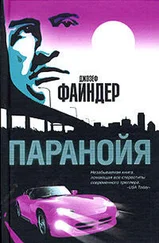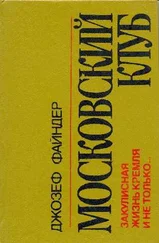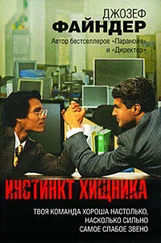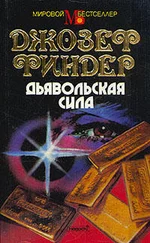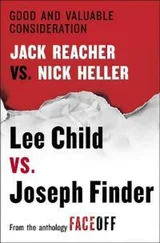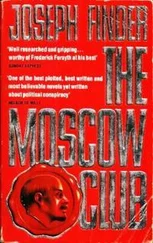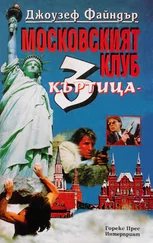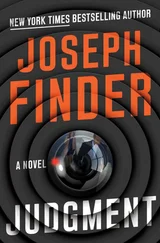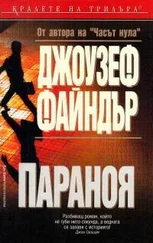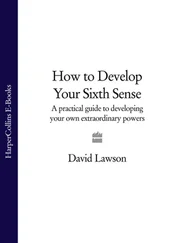“There is a numbered account, which we administer and service,” he explained patiently as if to a slow child. “You are permitted by law to withdraw or transfer those funds, as you wish. But there is also a vault — in effect, a safe-deposit box, which we are charged with keeping safe. But we do not have access to it. We never do, except in the most extraordinary circumstances. As the late Mr. Sinclair stipulated, in order to open the vault, an access code is required.”
“Then you can provide it to us,” Molly said, summoning all of her hauteur.
“I’m sorry, but I cannot.”
“As legal heir to his account, I request it.”
“If I could, I would gladly give it to you,” Eisler said. “But under the terms of the arrangement set up here, I cannot.”
“But—”
“I’m sorry,” the banker said with finality. “I’m afraid it is not possible.”
“I am the legal heir to all of my father’s estate,” Molly said indignantly.
“I am deeply sorry,” Eisler said, unperturbed. “I very much hope you did not come all the way here from — Boston, is it? — to learn this. A simple phone call would have saved you the time and expense.”
I sat in silence, barely listening to this exchange, absently unzipping my leather portfolio.
And then I heard it again:... “Vier” ... and then a string of other numbers. “Acht” ... “Sieben” ... I watched him studying the file, and then, in sequence and quite distinctly, it came:
“Vier... Acht... Sieben... Neun... Neun.”
“You see, Ms. Sinclair, this is,” the banker said aloud, “a double-passkey system, designed—”
“Yes,” I interrupted. Shuffling through the notes in my portfolio, I feigned examining one sheet closely. “It’s here. We have it.”
Eisler paused, nodded, then examined me suspiciously. “Excellent,” he said as I spoke the numbers. “By the terms established by the owners of the account, now that you have accessed it, this account is altered from dormant to active status—”
“Owners?” I interrupted. “There is more than one?”
“Yes, sir. It is a double-signature account. As legal beneficiary, your wife is one of the owners.”
“Who’s the other one?” she asked.
“That I cannot disclose,” Eisler said, at once apologetic and disdainful. “Another signature is required. To be perfectly truthful, I don’t know the identity of the other owner. When the second owner presents us with the access code, the sequence of numbers is inputted into our computers. The co-owner’s signature is encoded in the database, and when the proper code is entered, the signature is printed out graphically. This is our bank’s security system to ensure that no bank personnel can be implicated in the event of a claim against us.”
“So what does that mean?” Molly demanded.
“It means,” Eisler said, “that you are legally permitted to inspect the vault and to ascertain its contents. But without the authorization of the second owner, you may neither transfer nor withdraw the contents.”
Dr. Alfred Eisler escorted us into a cramped elevator down several flights. We were descending below Bahnhofstrasse, he explained, and into the catacombs.
We emerged into a short gray-carpeted corridor, a cage lined with steel bars. At the end of the corridor stood a beefy security guard in an olive-green uniform. He nodded at the bank’s director, then unlocked the heavy steel door.
None of us spoke as we passed through the door, down another steel-bar-lined corridor, until we reached a small enclosed area marked Sieben. Steel bars comprised three walls of the cage. The other wall was entirely metal, made of some sort of brushed chrome or steel. At its center was an enormous steel wheel with six spokes, evidently the mechanism by which the metal wall could be caused to open.
Eisler pulled a key from the ring attached to his belt and unlocked the cage.
“Please sit, if you would,” he said, indicating a small gray metal table in the center of the cage at which were two chairs. In the center of the table was a beige desk phone without any buttons, and a small black electronic keypad.
“The stipulation of the account,” the banker said, “is that no officer of the bank is permitted to remain in this area while the combination is being accessed. Enter the digits of the access code slowly, checking the digital readout to be sure you have not made a mistake. If you have, you are permitted a second try. If that fails, the electronic locking mechanism will seize. Access will not be permitted for at least twenty-four hours.”
“I see,” I said. “What happens after we enter the access code?”
“At that point,” Eisler explained, pointing toward the six-spoked wheel, “the inner vault will electronically unlock, and you then turn the wheel. It’s much easier than it looks, fear not. And the vault door will open.”
“And when we’re done?” Molly asked.
“When you are finished examining the contents, or if there are any problems, please call me by simply lifting the handset.”
“Thank you,” Molly said as Dr. Eisler left.
We waited a moment until we heard the second steel door shut.
“Ben,” Molly whispered. “What the hell do we—”
“Patience.” Slowly and carefully — my gauze-wrapped fingers had little dexterity — I entered 48799, watching as each number appeared in red electronic digits on the small black panel. When I had entered the final 9, there was a mechanical whooshing sound, as if a seal had been broken.
“Bingo,” I said.
“I can barely breathe,” Molly said, her voice choked.
Together we walked over to the wheel and turned it. It moved easily in our hands, gliding clockwise, and a large section of the steel wall jutted open.
Weak fluorescent lights illuminated the interior of the vault, which I saw was remarkably small, disappointingly so. The uneven, brick-walled inner chamber was maybe five feet by five feet. It was entirely empty.
And at second glance I realized that our eyes had been deceived by an optical illusion.
What at first had appeared to be the vault’s brick inner walls, roughly seamed and scored, could now be seen, as our eyes adjusted to the insufficient light, to be something else entirely.
They were not bricks. They were bars of gold, dull yellow, with a reddish tinge.
The cavernous vault was filled — almost entirely, floor to ceiling — with gold bullion.
“My God,” Molly whispered.
I could only gape. Tentatively, almost gingerly, we advanced into the vault toward the walls of solid gold. They did not glitter or glimmer, as one might have imagined. The overall coloration was a dull, mustardy yellow, but upon closer inspection I saw that some of the closely packed bars were a bright butter-yellow (new, and almost one hundred percent pure), and some were reddish-yellow, which indicated copper impurities: they had probably been cast from melted gold coins and jewelry. Each bar was stamped at its end with large serial numbers.
Were it not for the deep yellow hues and mellow patina, these gold bars might have been bricks, neatly stacked bricks, of the sort you could find at any construction site.
Many were scarred and dented; these had probably been in existence in Russia for a century or more. Some, I knew, had been stolen from Hitler’s armies by Stalin’s victorious troops; most had been mined in the Soviet Union. The edges of several of them were notched: assay marks. The newer bars were of a trapezoidal formation, but by far the majority were rectangular.
“Jesus, Ben,” Molly said, turning to me. Her face was flushed, her eyes wide. “Did you have any idea?” For some reason, she was whispering.
Читать дальше

